Atlanta Braves Top 5 worst trades of all-time (deadline or otherwise)

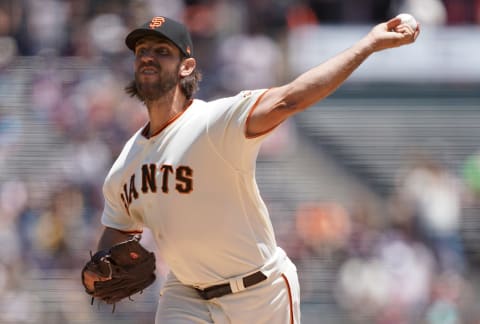
Overall, the Atlanta Braves have been a largely boring team when it comes to trades, especially at the looming trade deadline.
Many fans are hoping the Atlanta Braves front office will change that and reel in the pieces we need to contend with the Los Angeles Dodgers.
However, trading is a delicate balance. The market is competitive — supply and low and demand is high.
Unless you didn’t sleep through those economics classes, you already know what that means — the prices are sky high.
Trade strategies have been discussed already, a few rumors have surfaced surrounding Zach Wheeler, Madison Bumgarner, and others, and the fun is only just beginning.
Forthcoming are the worst five trades or mistakes the Atlanta Braves have made, and in most cases, would readily take back.
They range back almost 50 years, now, in some cases. Because, you know, hindsight is 20-20, no matter how long ago the mistake may have been.
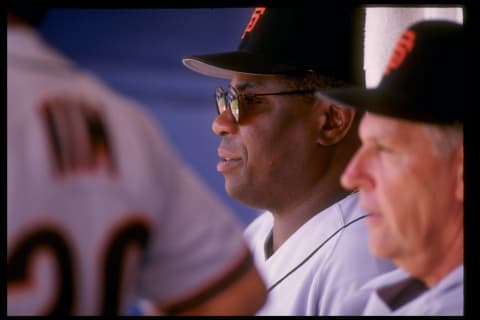
5. November 17, 1975
The Atlanta Braves traded Dusty Baker and Ed Goodson to the Los Angeles Dodgers. Received Lee Lacy, Tom Paciorek, Jerry Royster, and Jim Wynn.
What we got:
When we acquired Lee Lacy, he was essentially a career fourth outfielder that actually got much more playing time towards the second half of his career, starting most games he played in from 1984-1987.
He had some pop, some speed and was a decent bench piece in the 50 total games he played for the Atlanta Braves hitting .272 with three homers.
Lacy was swapped to the Dodgers during the 1976 season. He would go on to hit .303 with 20 home runs and 114 RBI and 92 stolen bases with Pittsburgh in 1982, 1983, and 1984. Lacy was a member of the famed 1979 ‘We are Family’ Pirates team, and has a World Series ring.
Outfielder Tom Paciorek had been a player that had bounced up and down to the minor leagues, but never really had earned a full-time shot.
During the 1976 season, he hit .290 over 324 at-bats with 10 doubles. That was about it, as he was released in 1978.
Paciorek went on to have some solid years with the Seattle Mariners. During his age 34 season in 1981, he was an All-Star hitting .326 with 15 home runs and 66 runs batted in.
Jerry Royster, of the four players acquired, would be the only athlete to remain a member of the Atlanta Braves for more than two seasons.
Royster would start for us from 1976-1979 and then became a utility piece until 1984. He was a plus defender and stole 174 bases over his career with the Atlanta Braves.
A light hitter, he had a .249 career batting average and that was business as usual for him during his tenure. Only 17 of his 291 career home runs came for the Atlanta Braves in the 1976 season.
But, Jim Wynn put up one of the more interesting and unique stat lines. Wynn hit .207 on the year, but had a .377 OBP. That’s right, he led the league with 127 walks.
Wynn’s entire career was smashing the ball, striking out, or walking. Unfortunately, we had him for one year at the tail end of what was a good career.
What we gave up:
A corner outfielder and pinch hitter, Goodson had his best season in 1973 with the Giants. For the Atlanta Braves, he was a throw-in on a deal where they needed no throw-in.
He appeared in 47 games for the 1975 team and hit .211. That’s about it.
Dusty Baker, on the other hand, was one of the best hitters the Atlanta Braves had and finished his career with 242 home runs and two All-Star appearances in 1980 and 1981. Those All-Star appearances, of course, did not come with Atlanta.
Over his career, he was good for an average close to .280, about 20 home runs, 80 RBI, and a dozen steals. One can assume he likely would have been a firm veteran leader as he went on to manage 22 seasons, winning 1,863 games.
While his postseason record wasn’t sparkling, Dusty still had an excellent career, if it’s done.
Analysis:
The Atlanta Braves traded Dusty Baker, a consistent offensive threat and a leader for what amounted to one season of an aging slugger and a defense-first infielder that was a reserve for 2/3 of his Braves tenure.
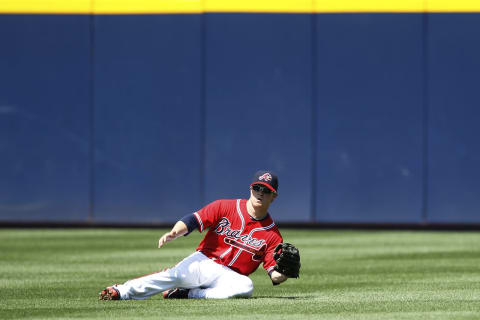
4. June 3, 2009
The Atlanta Braves traded Gorkys Hernandez, Jeff Locke and Charlie Morton to the Pittsburgh Pirates. Received Nate McLouth.
What we got:
Nate McLouth was serviceable, even pretty good for the Atlanta Braves for a short time. In 2009, McLouth hit .257 over 84 games, but hit 10 homers, 20 doubles, and knocked in 36 runs. He even added a dozen steals.
It looked like a justifiable move since Jordan Schafer slumped after looking like boy wonder at the start of the season.
After that, he was miserably bad for two seasons. I mean, like Dan Uggla, B.J. Upton at their worst bad. Like Michael Scott taking the microphone at a wedding bad, and if Twitter was a thing then, Nate probably wouldn’t have wanted to search up his name.
Two years removed from an All-Star season with Pittsburgh, McLouth mustered just a .190 batting average in 2010, then followed that up with a .228 performance in 2011, becoming an ineffective fourth outfielder that we gave up three quality prospects for.
McLouth would briefly recapture his fire in 2013 with Baltimore, but largely, was never the same. An injury during his 2014 stint with the Washington Nationals seemed to be the last straw.
What we gave up:
Gorkys Hernandez has been worth -0.6 WAR over his career, but interestingly, after spending the majority of 2012-2016 in the minors, found his stroke with the San Francisco Giants.
In reserve duty in 2017, he managed a .255 batting average and swiped 12 bags. In 2018, he hit 15 home runs and drove in 40 runs when he had only hit five home runs prior in the big leagues.
Now, almost as mysteriously as he surfaced, he’s back in Triple-A with the Red Sox organization.
Jeff Locke went on to be a quality, but not spectacular, starting pitcher for four seasons, including a 2013 All-Star campaign with the Pittsburgh Pirates.
He signed a $3.5 million dollar contract to play with the Marlins in 2017, but a shoulder injury sidelined him after seven starts and he hasn’t pitched since.
Presumably, he’s done now, but during his peak stretch, Locke would have been a fine #5 starter, as he complied a 34-32 record, a 4.29 ERA and his FIP in both the 2015 and 2016 seasons was about 0.54 and 0.60 lower, suggesting he had a bit of bad luck in those campaigns.
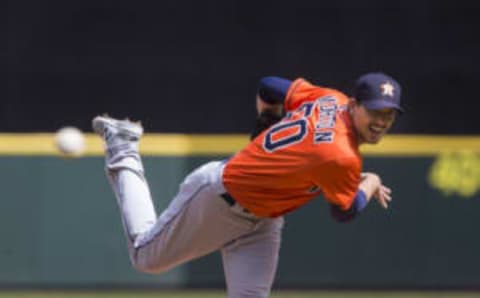
Charlie Morton, outside of recording the final out of the Houston Astros’ World Series win in 2017, became a pretty darn good pitcher — it just took a while.
After the trade, he pitched for the Pirates for the next seven seasons, spending time in the minors due to injury rehab or ineffectiveness in six of those seasons.
He was inconsistent, but there was plenty of potential there.
Houston trusted Morton’s potential (and his nasty curveball) and signed him to a 2 year, $14 million dollar contract and were rewarded for it, immensely.
He won 14 games for Houston in 2017, then followed that up with a 15-3 performance for Houston in 2018, en route to his first All-Star game.
This past offseason, the small market Rays paid him $45 million over three seasons and in his first season in Tampa, he’s an All-Star.
To date, he’s posted an 8-2 record with a career best 2.33 earned run average.
Analysis:
McLouth was terrible for the Atlanta Braves, and at best, we gave up two solid arms that could have served in our rotation when they were ready.
Morton has recently evolved into one of the game’s top pitchers. In a world where you can never have enough pitching, Locke and Morton would have indubitably helped the Braves far more.
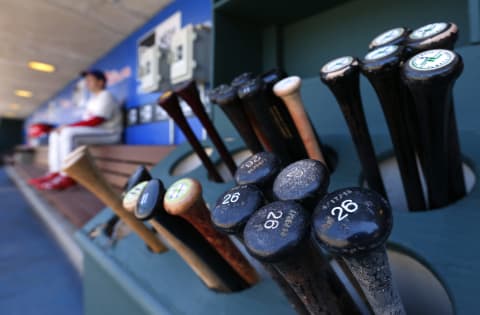
3. July 31, 2007
The Atlanta Braves traded Beau Jones (minors), Elvis Andrus, Neftali Feliz, Matt Harrison, and Jarrod Saltalamacchia to the Texas Rangers. Received Ron Mahay and Mark Teixeira.
What we got:
Getting Mark Teixeira was a big deal. From the trade deadline in 2007 to the deadline in 2008 when he was dealt, he played in 154 games, hit 37 home runs and drove in 134 runs while batting .295.
Those are big boy numbers, for sure, and had they been in the same season, it would have been one of the better individual offensive seasons in Atlanta Braves history.
Ron Mahay enjoyed a 14-year career as a fireman, and was good down the stretch after his acquisition, posting a 2.25 ERA over 30 appearances for the Atlanta Braves.
He signed with Kansas City for the 2008 season.
What we gave up:
Beau Jones was negligible in this deal, as he ended up reaching Triple-A after the trade, and never reached the big leagues. He was, however, a first round choice of the Atlanta Braves in 2005.
Elvis Andrus is probably the biggest boo-boo of the deal. He’s collected 1,653 hits, two-all star appearances, and stolen no less than 21 bases in a season where he’s been fully healthy.
Defensively, he hasn’t been a gold glover, but his athleticism and bat more than overcomes his penchant for errors.
In 2017, he powered up, smashing 20 home runs and stealing 25 bases for what was the best overall season of his career.
The 2010 Rookie of the Year was Neftali Feliz. He made 70 appearances, notched 40 saves, and registered a 2.73 ERA.
From 2009-2014, he was one of the best relievers in the American League, notching a 2.53 ERA and a total of 87 saves.
Feliz had Tommy John surgery in 2013 and was never really the same. He did manage a solid 2016 with the Pirates.
He started out in the rotation, then moved to the bullpen, but Matt Harrison really found his stride as a starter in 2011 where he won 14 games and posted a 3.39 ERA.
In 2012, he was an All-Star and won 18 games and logged 213 innings. It looked like the Rangers had found a rock solid starter, maybe even an ace.
However, injuries ultimately did Harrison in, as he was only able to make nine starts after his magical 2012 campaign.
The team seamstress’s nightmare, Jarrod Saltalamacchia, was huge prospect in his own right. The big bodied (6-4, 235) catcher was largely hyped because of his immense offensive potential.
After the trade, he never played more than 84 games in a season for Texas, due to injury. However, he did eventually find a stride.
From 2011-2013, Salty averaged 18 home runs and 60 RBI for the Boston Red Sox. Most recently, he posted a solid campaign in 2016 for the Detroit Tigers as a part-time player, batting .284 with 12 home runs.
Analysis:
When you examine this trade, we traded who would become one of the better shortstops in the league in Elvis Andrus, an excellent reliever for four seasons in Neftali Feliz, a starter that was an All-Star in Matt Harrison, and Salty, who largely, turned out to be a bit of a bust.
We got one season of Tex, and what’s more is the anemic return we got for Tex when we traded him. Don’t worry, that’s next.

2. July 29, 2008
The Atlanta Braves traded Mark Teixeira to the Los Angeles Angels of Anaheim. Received Stephen Marek (minors) and Casey Kotchman.
What we got:
Kotchman’s prospect light shined the most brightly after his 2003 and 2004 minor league seasons where he hit .360 over 546 at-bats from Single-A to Triple-A ball. He never produced like that for the Angels, and when we acquired him, it seemed like a classic change-of-pace move for the lefty.
The only thing that Kotchman had in common with Tex is that we acquired both at the trade deadline, and traded them a year later. Over 130 games, he hit just .266 with eight homers.
He just wasn’t good.
Stephen Marek had an awful 2009 in the minor leagues between Gwinnett and Mississippi with a mean 7.28 ERA.
He was much better in 2010, but basically just clogged up a spot on our 40-man for two years. He never found his way to the majors.
What we gave up:
The man that in the equivalent of a full season for the Atlanta Braves, hit 37 home runs and drove in 134 runs while batting .295. I know, we weren’t going to spend on him long-term. The Yankees did sign Tex to an 8-year, $180 million contract in 2009.
Analysis:
In the whole Tex ordeal, we basically ended up trading Beau Jones, Elvis Andrus, Neftali Feliz, Matt Harrison, Jarrod Saltalamacchia and Mark Teixeira for a career minor leaguer and a full season of Casey Kotchman. Let that one sink in.

1. August 28, 1983
The Atlanta Braves traded players to be named later and $150,000 to the Cleveland Indians. Received Len Barker. The Atlanta Braves sent Rick Behenna (September 2, 1983), Brett Butler (October 21, 1983), and Brook Jacoby (October 21, 1983) to the Cleveland Indians to complete the trade.
What we got:
Len Barker reached the pinnacle of his career when he threw a perfect game on May 15, 1981 and was an All-Star that summer. The perfect game followed a 19 win season in 1980, and the year after appearing in the mid-summer classic, he won 15 games.
Barker, at the time we acquired him, had been struggling mightily. He had an 8-13 record with a 5.11 ERA before coming over.
We shouldn’t have been surprised with what we received — Barker stacked up a 10-20 record from 1983-1985 and never pitched a full season.
In the Braves’ defense, they aimed to acquire a pitcher approaching his prime (26 years old) and based off prior performance, it looked like it could have been pretty good.
What we gave up:
The first piece listed in the trade here was Rick Behenna, who was a prospect at the time, but wasn’t a loss in the end for the Atlanta Braves.
Behenna righty appeared in 26 games, starting 17 of them and posted a 6.12 ERA in three cups of coffee in the big leagues.
He became a high school pitching school afterwards. Unfortunately, Behenna passed away from cancer in 2012.
Now, for this, picture if the Braves traded Drew Waters or Cristian Pache. Then, whoever you imagined in the scenario and was one of the league’s best lead-off hitters for the next 11 seasons.
That’s what the Atlanta Braves traded away when they included Brett Butler in this deal.
Butler was a mega prospect before the internet age. He had an excellent bat, the ability to hit .300+, and had amazing speed.
The centerfield extraordinaire racked up 2,375 hits in his career, stole 558 bases, and hit .290. Imagine that next to Dale Murphy.
His best season came in 1990 for the San Francisco Giants where he collected 192 hits and hit .309. He led the league in triples on four different occasions.
Butler received votes for the Most Valuable Player award six times, but oddly, only had one All-Star appearance in 1991.
So yeah, the Atlanta Braves blew it. And we’re not even done with the trade yet!
Brook Jacoby was not just a power prospect, but a complete hitting prospect. He drove in 100 runs not once, but twice while in the minors for the Atlanta Braves, and hit 86 home runs over four full seasons in the minors, batting .299.
So, for the sake of comparison, a better version of Austin Riley in the minors. That’s an average season of .299, 22 HR, and 87 RBI across all levels.
Jacoby didn’t set the world on fire in the majors, but he was Cleveland’s starting third baseman from 1984-1990, made two All-Star teams (1986, 1990), and socked 32 home runs in 1987.
He finished his career with 120 home runs.
On top of that, they also gave Cleveland $150,000. Which, according to this inflation calculator, is the equivalent of $400,000 today.
Analysis:
Imagine the panic from our fan base if we traded Pache and Riley for a starting pitcher that wasn’t a top 10 starter. Then, imagine the bitterness if that starting pitcher won 10 games over the next 2.5 seasons. Yeah. It was like that.
Next. How do we stack up with LA, anyway?. dark
Here’s to hoping the Atlanta Braves don’t pull a move like any of these this month.